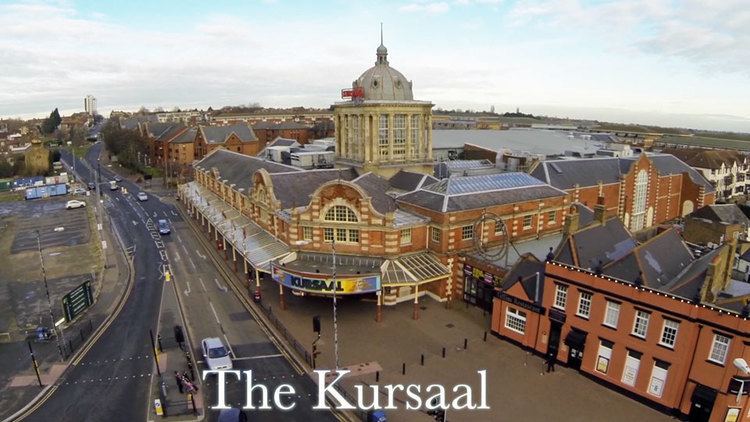 | ||
Similar Southchurch, Chalkwell railway station, Adventure Island, Thames Estuary, Southend Pier | ||
The Kursaal is a Grade II listed building in Southend-on-Sea, Essex, which opened in 1901 as part of one of the world's first purpose-built amusement parks. The venue is noted for the main building with distinctive dome, designed by Campbell Sherrin, which has featured on a Royal Mail special edition stamp.
Contents
- Map of The Kursaal Southend on Sea UK
- History
- Football Greyhound Racing and Music
- List of rides and attractions
- References
Map of The Kursaal, Southend-on-Sea, UK
History
The Kursaal site was opened in 1894 by father and son Alfred and Bernard Wiltshire Tollhurst on four acres of land purchased the previous year, as the 'Marine Park and Gardens'. In 1901, they opened a grand entrance pavilion, the Kursaal Palace, designed by Campbell Sherrin, containing a circus, ballroom, arcade, dining hall and billiard room. The word Kursaal is German, meaning a "Cure Hall" or spa, and it seems to have been adapted to mean a place of healthy amusement. Southend's Kursaal became the largest fairground in the south of England.
Football, Greyhound Racing and Music
In 1927 two Scotsmen named Jimmy Shand and Tom Wilson approached Southend United F.C., who played at the Kursaal, and agreed a deal to start greyhound racing on 27 July. John Bilsland then added his name to the venture, but it only operated for two years before the entire enterprise (including greyhounds) was moved by train to the Stanley Stadium in Liverpool, due to increased rent demands. The football club remained there until 1933, when they moved to Southend Stadium.
The ballroom of the Kursaal hosted all manner of musical artistes following its opening in 1901. During the 1970s it made its name as Southend's preeminent Rock music venue, showcasing Internationally successful acts such as Black Sabbath, Deep Purple, Thin Lizzy and AC/DC. A photograph of the latter performing at The Kursaal in 1977 was used on the front cover of their Let There Be Rock album.
The Kursaal as a whole had been in gradual decline since the early 1970s, with the outdoor amusements closing in 1973. At the end of 1977 the decision was made to close the ballroom, with the main building finally succumbing in 1986.
Although the outdoor amusement area was redeveloped for housing, the main Kursaal building reopened in 1998 after a multimillion-pound redevelopment, containing a bowling alley, a casino and other amusements.
